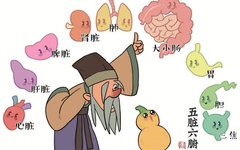The term “Zangfu” refers to the internal organs as a whole. According to their physiological functions, the “Huangdi Neijing” classifies the internal organs into three categories: the Five Zang, the Six Fu, and the Extraordinary Organs. As stated in the “Lüshi Chunqiu”: “There are three hundred sixty joints in a person, nine orifices, five Zang, and six Fu.”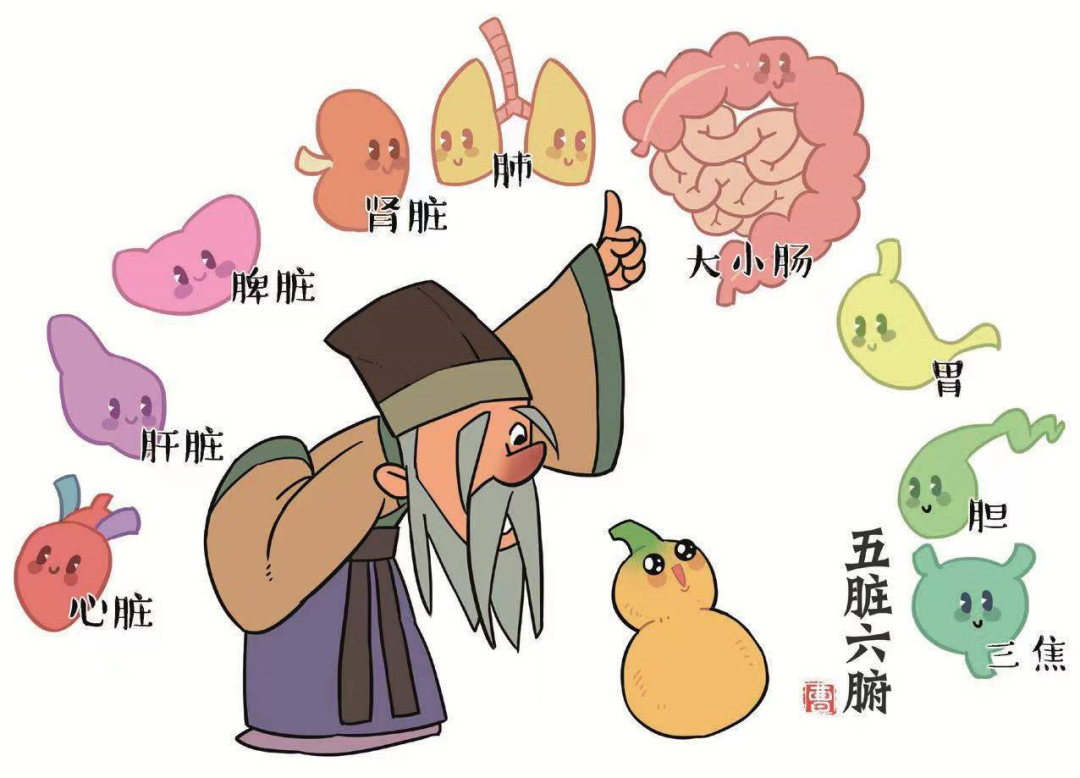 Centered around the Five Zang, each Zang corresponds to a Fu, with Yin and Yang representing their interrelation, connected through the meridians:The Five Zang are responsible for storing the essential substances necessary for life: Heart (Xin), Liver (Gan), Spleen (Pi), Lung (Fei), Kidney (Shen),while the Six Fu govern the reception, transmission, transformation, and excretion of food substances: Gallbladder (Dan), Stomach (Wei), Large Intestine (Da Chang), Small Intestine (Xiao Chang), San Jiao (San Jiao), Bladder (Pang Guang),and the Extraordinary Organs include: Brain (Nao), Marrow (Sui), Bone (Gu), Vessels (Mai), Gallbladder (Dan), and Uterus (Zi Bao).
Centered around the Five Zang, each Zang corresponds to a Fu, with Yin and Yang representing their interrelation, connected through the meridians:The Five Zang are responsible for storing the essential substances necessary for life: Heart (Xin), Liver (Gan), Spleen (Pi), Lung (Fei), Kidney (Shen),while the Six Fu govern the reception, transmission, transformation, and excretion of food substances: Gallbladder (Dan), Stomach (Wei), Large Intestine (Da Chang), Small Intestine (Xiao Chang), San Jiao (San Jiao), Bladder (Pang Guang),and the Extraordinary Organs include: Brain (Nao), Marrow (Sui), Bone (Gu), Vessels (Mai), Gallbladder (Dan), and Uterus (Zi Bao).

For example, the Heart and Small Intestine, Lung and Large Intestine, Spleen and Stomach, Liver and Gallbladder, Kidney and Bladder are interrelated.In TCM’s theory of organ representation, the Five Zang are relatively full in form, capable of transforming and storing essence; the Six Fu can receive, store, and transform food and fluids; the common physiological characteristic of the Extraordinary Organs is that they do not directly contact food and fluids, but rather function as relatively closed organ systems that also store essence.As stated in the “Suwen: On the Distinction of the Five Zang”: “The so-called Five Zang are those that store essence and do not leak; thus, they are full but cannot be solid. The Six Fu are those that transmit and transform substances but do not store; thus, they are solid but cannot be full.” This summarizes the functions of the Five Zang and Six Fu.In the previous article, we discussed the functions of the Heart, Liver, Lung, Spleen, and Kidney in the human body. Today, we will talk about the functions of the Stomach, Gallbladder, Small Intestine, Large Intestine, Bladder, and San Jiao.The Six Fu include the Gallbladder, Stomach, Small Intestine, Large Intestine, Bladder, and San Jiao, which primarily govern the reception and transformation of food and fluids, stating that they “transmit and transform substances but do not store, thus they are solid but cannot be full.” The digestion and absorption of food and the metabolism of fluids are the results of the coordinated actions of multiple organs.The functions of the Six Fu are digestion, absorption, and excretion.TCM believes that during the digestion and excretion of food, it must pass through seven key areas, referred to as the “Seven Gates of Passage.”For example, the “Nanjing: Difficulty 44” states:“The lips are the flying gate, the teeth are the door gate, the epiglottis is the suction gate, the stomach is the entrance gate, the lower mouth of the Tai Cang is the exit gate, the Large and Small Intestines meet at the gate, and the lower end is the spirit gate; thus, it is called the Seven Gates of Passage.”
From this, it can be seen that the physiological function of the Six Fu is to receive food and fluids and to transmit waste, with the common physiological characteristic being that they transmit and transform substances but do not store, thus they are solid but cannot be full.
The function of the Six Fu is primarily to transmit and transform food and fluids, and later generations of physicians summarized this as “the Six Fu are used for passage and to descend in order.”
Gallbladder
The Gallbladder is located in the right hypochondrium, closely connected to the Liver, and attached to the short lobe of the Liver. The Liver and Gallbladder are interconnected through meridians, representing Yin and Yang. The Gallbladder is a hollow, sac-like organ that stores bile.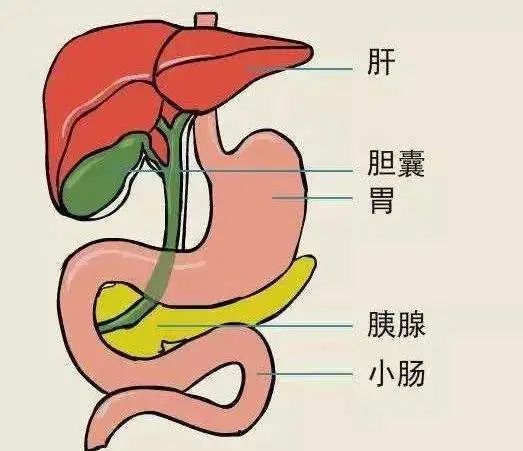 Since bile is considered the essence of the body, the Gallbladder is referred to as the “Palace of Essence” and “Palace of Clarity.”The “Huangdi Neijing” states: “The Gallbladder is the official of righteousness, making decisions.” The Gallbladder and Liver are like good brothers; the “Liver General” is skilled in strategy, while the “Gallbladder Minister” is adept at making fair and decisive judgments.The Gallbladder plays a role in concentrating, storing, and excreting bile. In daily life, we often refer to being bold or timid, which relates to the state of the Gallbladder.The Gallbladder is the official of righteousnessthat stores and excretes bile. Bile is transformed from the residual essence of the Liver. After being generated in the Liver, bile is stored in the Gallbladder and released into the Small Intestine during eating to aid digestion. The influence of the Liver and Gallbladder on digestion is not only reflected in the production and excretion of bile but also in the promoting effect of the Liver and Gallbladder’s functions on the Spleen and Stomach’s ascending and descending processes. When the functions of the Liver and Gallbladder are normal, the production and excretion of bile occur as usual, and the Spleen and Stomach’s ascending and descending processes are orderly, allowing for normal digestion and absorption of food.It governs decision-making.The physiological function of the Gallbladder is closely related to emotional activities, primarily manifested in decision-making and courage. Thus, the “Suwen: Ling Lan Mi Dian Lun” states: “The Gallbladder is the official of righteousness, making decisions.”
Since bile is considered the essence of the body, the Gallbladder is referred to as the “Palace of Essence” and “Palace of Clarity.”The “Huangdi Neijing” states: “The Gallbladder is the official of righteousness, making decisions.” The Gallbladder and Liver are like good brothers; the “Liver General” is skilled in strategy, while the “Gallbladder Minister” is adept at making fair and decisive judgments.The Gallbladder plays a role in concentrating, storing, and excreting bile. In daily life, we often refer to being bold or timid, which relates to the state of the Gallbladder.The Gallbladder is the official of righteousnessthat stores and excretes bile. Bile is transformed from the residual essence of the Liver. After being generated in the Liver, bile is stored in the Gallbladder and released into the Small Intestine during eating to aid digestion. The influence of the Liver and Gallbladder on digestion is not only reflected in the production and excretion of bile but also in the promoting effect of the Liver and Gallbladder’s functions on the Spleen and Stomach’s ascending and descending processes. When the functions of the Liver and Gallbladder are normal, the production and excretion of bile occur as usual, and the Spleen and Stomach’s ascending and descending processes are orderly, allowing for normal digestion and absorption of food.It governs decision-making.The physiological function of the Gallbladder is closely related to emotional activities, primarily manifested in decision-making and courage. Thus, the “Suwen: Ling Lan Mi Dian Lun” states: “The Gallbladder is the official of righteousness, making decisions.”
Small Intestine
The Small Intestine is located in the abdominal cavity, connecting to the Stomach at its upper end through the pylorus and to the Large Intestine at its lower end through the ileocecal valve, coiling and stacking within the abdominal cavity.
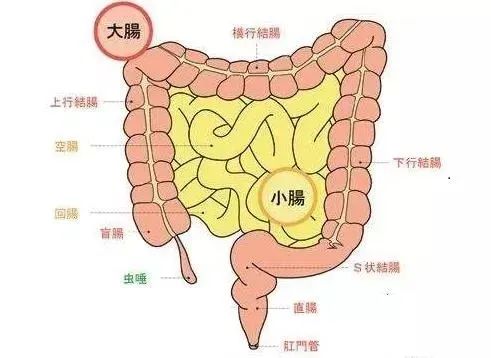
As stated, “The Small Intestine is the official of reception and transformation,” it is responsible for receiving and organizing. It accepts the food chyme transferred from the Stomach, hence it is called the official of reception.Official of ReceptionIt can further digest and absorb the food chyme, separating it into clear and turbid parts, with the clear part moving down to the Bladder and the turbid part being passed to the Large Intestine.
The Heart and Small Intestine are interrelated, functioning like a cooperative couple; the “Heart Emperor” handles external affairs, while the “Small Intestine Empress” is responsible for internal matters of reception and organization. Many may not know their relationship, but the term “warm-hearted” reflects their close connection.
Reception and Transformation
The reception function of the Small Intestine is primarily reflected in two aspects: first, the food that has been initially digested in the Stomach must descend to the Small Intestine in a timely manner for it to receive; second, the food that descends to the Small Intestine must remain there for a certain period to allow for further digestion and absorption. The transformation function of the Small Intestine refers to converting food and fluids into essential substances, which are then transported by the Spleen to nourish the entire body.
Separation of Clear and TurbidThe Small Intestine’s function of separating clear from turbid is specifically manifested in three aspects:
-
The food that descends from the Stomach to the Small Intestine is divided into the essence of food and waste under the action of the Small Intestine’s transformation function;
-
The essence of food is absorbed and transported by the Spleen to the Heart and Lungs, and distributed throughout the body to maintain normal physiological functions;
-
The waste after separating the clear from the turbid is divided into food residues and waste water, with food residues descending to the Large Intestine to form feces for excretion. Excess water enters the Bladder through the secretion of the Small Intestine to form urine for excretion.
Thus, when the physiological function of the Small Intestine is normal, food can be fully digested and absorbed, with clear and turbid substances following their respective paths.Abnormal physiological functions of the Small Intestine can lead to digestive and absorption issues, resulting in symptoms such as abdominal distension, pain, and indigestion, or abnormalities in bowel movements, such as loose stools or reduced urination.
Stomach
The Stomach is located within the abdominal cavity, below the diaphragm, connecting to the esophagus above and the Small Intestine below. The Stomach is also known as the “Stomach Cavity” and is divided into three parts: upper, middle, and lower.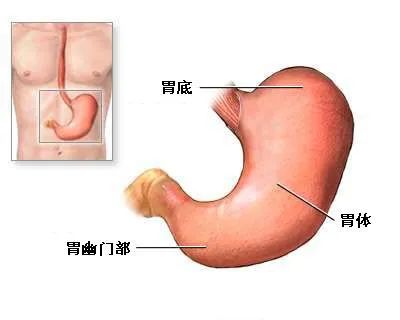 The upper part is the upper cavity, including the entrance; the lower part is the lower cavity, including the exit; the middle cavity includes the body of the Stomach.The entrance connects to the esophagus, and the exit connects to the Small Intestine.Although the Stomach and Spleen are like “conjoined twins” working in the “kitchen,” their preferences are quite opposite; the Stomach prefers a moist environment and dislikes dryness, thriving in a suitably moist environment, hence it is affectionately called “Stomach Master (Moisture)”.Official of StorageThe Stomach governs the downward movement of Qi.One can imagine that once food enters the Stomach, it must move downward to be better digested and absorbed; if food moves upward, it results in vomiting, so the Stomach Qi should be smooth and descending.At the same time, the Stomach can digest food into chyme (a substance resembling porridge after being ground), which is then passed to the Small Intestine for further digestion and absorption.
The upper part is the upper cavity, including the entrance; the lower part is the lower cavity, including the exit; the middle cavity includes the body of the Stomach.The entrance connects to the esophagus, and the exit connects to the Small Intestine.Although the Stomach and Spleen are like “conjoined twins” working in the “kitchen,” their preferences are quite opposite; the Stomach prefers a moist environment and dislikes dryness, thriving in a suitably moist environment, hence it is affectionately called “Stomach Master (Moisture)”.Official of StorageThe Stomach governs the downward movement of Qi.One can imagine that once food enters the Stomach, it must move downward to be better digested and absorbed; if food moves upward, it results in vomiting, so the Stomach Qi should be smooth and descending.At the same time, the Stomach can digest food into chyme (a substance resembling porridge after being ground), which is then passed to the Small Intestine for further digestion and absorption.
-
Reception and Fermentation of Food and Fluids
Food enters through the esophagus, reaching the Stomach, where it is received and retained for a certain period to facilitate digestion and absorption, hence the Stomach is referred to as the “Sea of Food and Fluids.”The food received in the Stomach, through continuous peristalsis and the Stomach’s Yang Qi’s vaporization, transforms food and fluids into chyme, a process known as fermentation.After fermentation in the Stomach, the essential substances needed by the body can overflow, allowing Qi and Blood to be abundant, nourishing the Zangfu organs to perform their physiological functions, hence the Stomach is also called the “Sea of Food, Qi, and Blood.”The digestion and absorption of food is a complex physiological process that relies not only on the Stomach’s reception and fermentation functions but also on the Spleen’s transportation and the Small Intestine’s separation of clear and turbid, all working together to complete the process smoothly.In TCM, the normal digestive function of the body is often summarized as “Stomach Qi.” Ancient physicians placed great importance on the role of Stomach Qi, believing that a person “is based on Stomach Qi”; when Stomach Qi is strong, the Five Zang are abundant, and when Stomach Qi is weak, the Five Zang decline. In clinical practice, maintaining “Stomach Qi” is often regarded as an important principle.
-
Governs Downward Movement, Harmonizing Descent
After food has been received and fermented in the Stomach and retained for a certain time, it must descend to the Small Intestine for separation of clear and turbid; the clear part is transported by the Spleen to nourish the body, while the turbid part continues to descend to the Large Intestine to form waste for excretion.Thus, the function of the Stomach governing downward movement is related to the entire process of digestion, absorption, and excretion of food.Moreover, the functions of Stomach Qi and Spleen Qi are complementary; Stomach Qi promotes the timely descent of food to the Small Intestine for separation of clear and turbid, while Spleen Qi promotes the timely distribution of the essence of food throughout the body, ensuring the orderly ascending and descending processes of the Spleen and Stomach, completing the digestion and absorption of food.
Large Intestine
The Large Intestine is located in the abdomen, connecting to the Small Intestine at its upper end through the ileocecal valve and ending at the anus, also known as the “Spirit Gate.”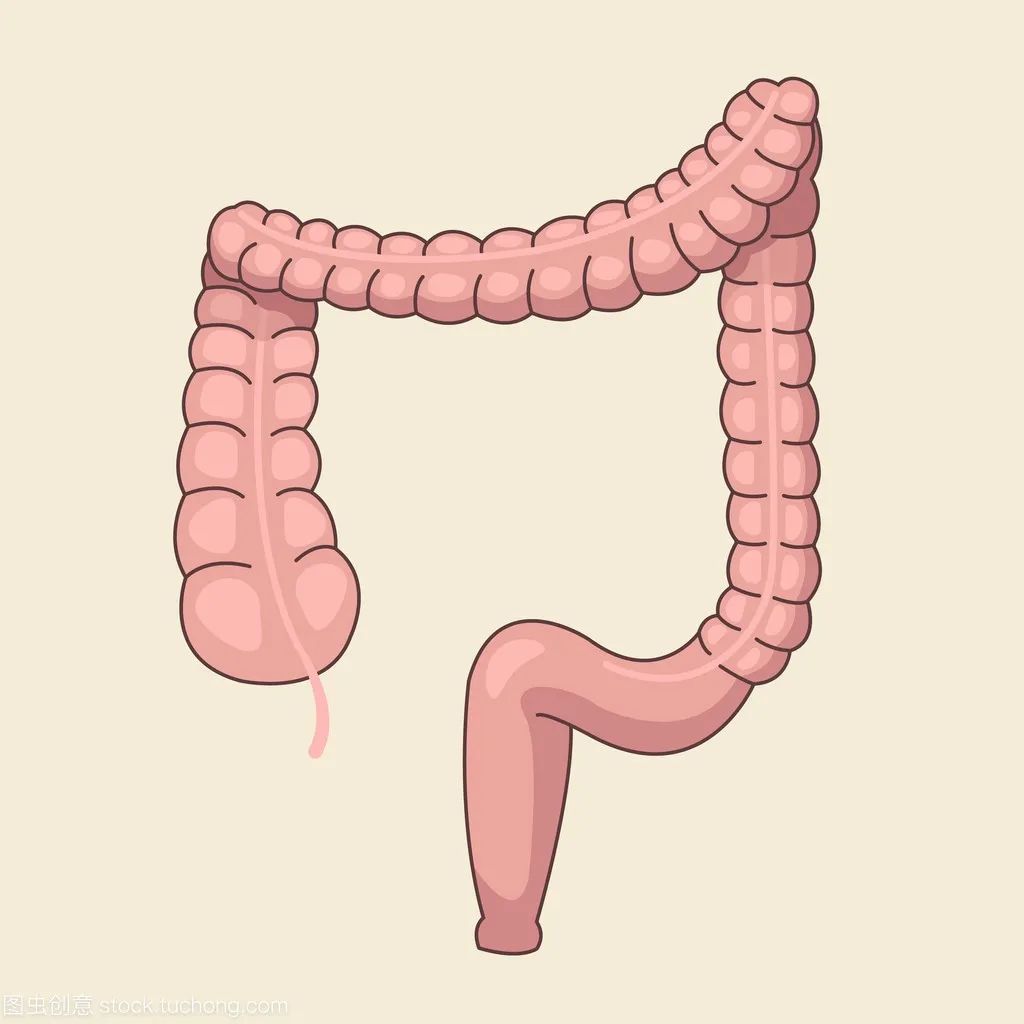 The “Huangdi Neijing” states: “The Large Intestine is the official of transmission and transformation.” The Lung and Large Intestine are good friends, often experiencing illness simultaneously.The Large Intestine is the official of transmission.Have you noticed that when we have a cold and cough, sometimes our bowel movements also become irregular? “The Large Intestine transmits and transforms waste” is precisely because the Lung Qi descends, allowing the Large Intestine to expel feces. Once the feces are expelled, the symptoms in the lungs also alleviate.Transmission of WasteAfter the food has been separated into clear and turbid in the Small Intestine, the clear part, which is the essence of food, is transported by the Spleen to the Heart and Lungs, distributed throughout the body; the turbid part, which is the waste, descends to the Large Intestine, where it is dried and formed into feces for excretion. The transmission function of the Large Intestine reflects the descending function of the Stomach and is closely related to the Lung’s descending function. The Lung Qi’s descent promotes the downward movement of waste, facilitating the Large Intestine’s transmission.The Large Intestine governs fluids,indicating that while transmitting waste, it can also absorb some water to dry the waste, forming solid feces for excretion, hence the saying “The Large Intestine governs fluids.”
The “Huangdi Neijing” states: “The Large Intestine is the official of transmission and transformation.” The Lung and Large Intestine are good friends, often experiencing illness simultaneously.The Large Intestine is the official of transmission.Have you noticed that when we have a cold and cough, sometimes our bowel movements also become irregular? “The Large Intestine transmits and transforms waste” is precisely because the Lung Qi descends, allowing the Large Intestine to expel feces. Once the feces are expelled, the symptoms in the lungs also alleviate.Transmission of WasteAfter the food has been separated into clear and turbid in the Small Intestine, the clear part, which is the essence of food, is transported by the Spleen to the Heart and Lungs, distributed throughout the body; the turbid part, which is the waste, descends to the Large Intestine, where it is dried and formed into feces for excretion. The transmission function of the Large Intestine reflects the descending function of the Stomach and is closely related to the Lung’s descending function. The Lung Qi’s descent promotes the downward movement of waste, facilitating the Large Intestine’s transmission.The Large Intestine governs fluids,indicating that while transmitting waste, it can also absorb some water to dry the waste, forming solid feces for excretion, hence the saying “The Large Intestine governs fluids.”
Bladder
The Bladder is located in the lower abdomen and is a sac-like organ. The Bladder connects to the Kidneys above and the urethra below, directly communicating with the outside.
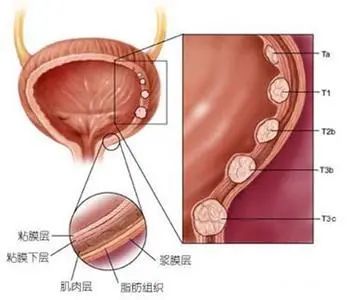
The primary physiological function of the Bladder is to store and excrete urine, making it an important organ involved in fluid metabolism.
As stated, “The Bladder is the official of the capital, storing fluids, and can excrete when vaporized,” the Bladder is responsible for managing the “drainage system.”
After the Small Intestine has completed a series of reception and organization, it passes the liquid portion to the Bladder for management; however, at this point, is this liquid urine? Actually, it is not; the Bladder must separate the usable fluids from the waste fluids. Only the waste fluids become urine, which will eventually be excreted through the urethra.We should remember not to hold in urine, as it can easily lead to health issues.Storage of FluidsThe fluids ingested by the body are distributed throughout by the actions of the Lungs, Spleen, Kidneys, and San Jiao, nourishing the Zangfu organs and maintaining overall function.The portion of turbid liquid after metabolism is sent to the Bladder, where the Kidney Qi’s vaporization separates the clear from the turbid; the clear part returns to the body to re-enter fluid metabolism, while the turbid part is excreted.Excretion of UrineUrine is stored in the Bladder and excreted through vaporization, thus timely excretion of urine is a function of the Bladder.The Bladder’s urination function relies on the vaporization function of the Kidney; when the Kidney’s essence is sufficient and its sealing function operates normally, the Bladder’s opening and closing can be regulated, allowing for normal urination.
San Jiao
San Jiao is one of the Six Fu, and because it is the largest among the organs and does not have a direct Yin-Yang relationship with the Five Zang, it is also referred to as the “Lonely Palace.” San Jiao is a unique term in TCM’s theory of organ representation, including the upper, middle, and lower parts:The upper Jiao includes the Heart and Lungs,the middle Jiao includes the Spleen and Stomach,and the lower Jiao includes the Kidneys, Bladder, and Large and Small Intestines.As stated, “San Jiao is the official of drainage, where the water pathways emerge,” San Jiao has the function of unblocking water pathways and regulating Qi. For many, this is a very unfamiliar concept; San Jiao works silently, without seeking recognition.
San Jiao is a unique term in TCM’s theory of organ representation, including the upper, middle, and lower parts:The upper Jiao includes the Heart and Lungs,the middle Jiao includes the Spleen and Stomach,and the lower Jiao includes the Kidneys, Bladder, and Large and Small Intestines.As stated, “San Jiao is the official of drainage, where the water pathways emerge,” San Jiao has the function of unblocking water pathways and regulating Qi. For many, this is a very unfamiliar concept; San Jiao works silently, without seeking recognition.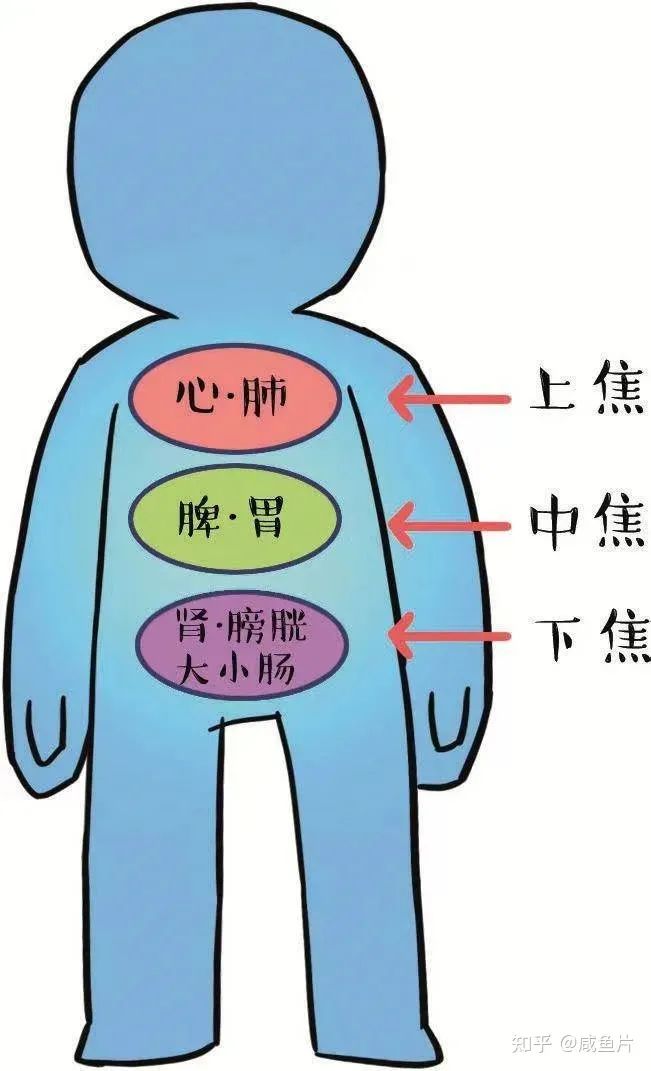
San Jiao actually refers to the collective term for the upper, middle, and lower Jiao, which is the pathway for the circulation of Yuan Qi. Yuan Qi, or true Qi, originates from the Kidneys and is the foundation for maintaining normal physiological functions. San Jiao distributes Yuan Qi throughout the body, stimulating and promoting the functions of various organs, thus San Jiao is the overall commander of the body’s “Qi transformation activities.”
Regulating QiSan Jiao governs the movement of Qi; the so-called “Qi” refers to the various forms of Qi throughout the body. Qi movement refers to the rise and fall, entry and exit of Qi, while Qi transformation refers to the metabolism and mutual transformation of Qi, Blood, and fluids. Since San Jiao is the pathway for the movement of Qi, it also serves as the site for the mutual transformation of various substances in the body, thus it can regulate the overall Qi movement and transformation throughout the body.Yuan Qi is distributed throughout the body via San Jiao, hence the “Nanjing: Difficulty 66” states: “San Jiao is the messenger of Yuan Qi, governing the circulation of the three Qi, traversing the Five Zang and Six Fu.” San Jiao is the pathway for the rise and fall of Qi in the body, allowing Qi to be distributed throughout the Five Zang and Six Fu, nourishing the entire body.Unblocking Water Pathways and Regulating FluidsSan Jiao serves as the pathway for the movement of fluids. The metabolism of fluids in the body is accomplished through the coordinated actions of the Lungs, Spleen, Kidneys, and Bladder, but it must pass through San Jiao for normal fluid metabolism to occur.

